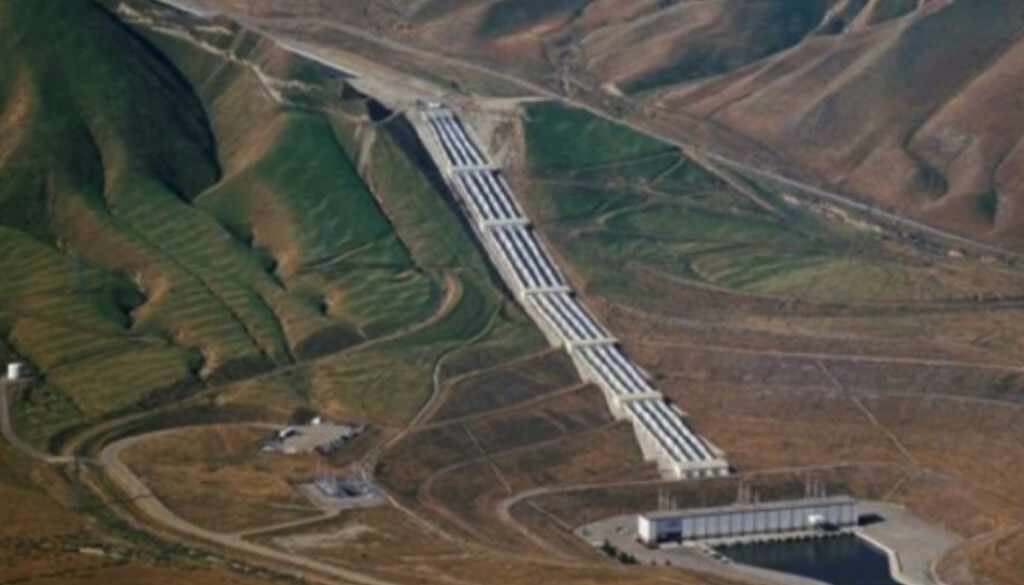Water Use in California

The Colorado River supplies about 14 percent of the water used in California. Nearly 16 million people are dependent in one fashion or another upon a river that once was considered an uninterruptible source, and the 19 years of low inflow to the Colorado Basis presents our state with a bit of a crisis. All seven of the states who share this water system watch the flow in the rivers and the declining water levels in the reservoirs closely. Because of the overuse of the river – and the increasing needs by all of the states on the system – we are starting to see tensions and disputes between those states. In April of last year Denver Water talked of pulling it’s funding for a pilot conservation program unless Arizona modified its own draw of water and, shortly thereafter, Colorado said it would no longer work with Arizona. Some farmers are now worried that the water they traditionally use could be diverted to other users.
In addition to the Colorado River, to a great extent our state relies on rain and snowfall in the northwest and eastern portions of the state. Some of these areas get up to 155 inches of rain a year (compared to the Monterey average of 19.5 inches a year). This all results in an incredible 200 Million Acre Feet (MAF) a year coming from those sources. Then about 110-115 MAF is absorbed by plant life in those areas or evaporated back into the atmosphere. About 20 MAF stay in the lakes and streams in that part of our state, and the remaining 60-65 MAF becomes available for central and southern California streams, agricultural and urban uses. Unfortunately, current models indicate that the Sierra Nevada snowpack is likely to go down in future years.
We also have about 1,200 reservoirs around that state, as well as a highly engineered water system that moves water from north to south and from east to west to large cities which have very little rain of their own. Two of California’s largest cities of over one million people (San Diego and Los Angeles) are basically desert communities dependent on importing water from other parts of the state; as well as from aqueducts bringing water from the Colorado River Basin. The other large city of over one million – San Jose – is in the Bay Area and gets its water from 3 major sources: groundwater, imported surface water, and local mountain surface water.
In fact, the Bay Area and the coastal cities between LA to San Diego import more than 60% of the water they use. So, for instance, a resident of San Diego turns on their tap and get water which is provided by the city who, in turn, buys in from the Metropolitan Water District (MWD) of Southern California. The MWD gets its water from Lake Havasu, which gets its water from the Colorado River Basin. Much of that water travels through a highly engineered system of water canals and pipes, and is pumped over mountains (see picture above) to get to where it is used. So you can see how important the health and reliability of that system is to those communities.
In addition, many communities in the state also rely heavily on groundwater from aquifers which, in normal years provides about 30% of California’s water. During droughts, however, this has gone up to 50-60% for short periods of time. To a great extent aquifers are recharged from rainwater soaking into the ground; but recharge does not happen very fast. As a result, many aquifers are becoming overused and we have had subsidence in some areas – especially the Central Valley – meaning the ground has collapsed (up to 28 feet) and those aquifers will most likely never recover. Many other aquifers get contaminated because of poor land use practices which allow contaminants to enter and build up in them. That means our state is becoming more and more dependent on water transported from other places; and this is causing disputes with other states and between cities in Northern California (which have water) and Southern California (which wants more and more).
About 30 million acre feet (MAF) is used for agricultural irrigation, while about 9 MAF (and increasing) is being used by urban and industrial users. But California farmers compete with both environmental needs and the increased needs of growing cities in the state and in some areas are quite concerned about how much water will be available to them in the future.
Fixing these issues will require a great deal on money and farmers, the legislature, and cities don’t seem to want to set aside the money to do that. But there are ways to augment California’s water supply. Some of it will be expensive and much will require new legislation and a different way of looking at things – but these are all possible. I will get to those ideas, but first: